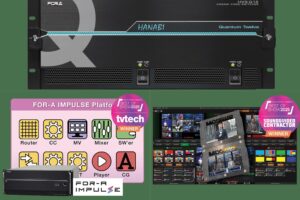Frost & Sullivan’s recent analysis, Global Network Access Control Market, Forecast to 2024, finds that the proliferation of the Internet of Things (IoT), the convergence of information technology (IT) and operation technology (OT), and customers’ migration to the cloud at a faster pace are rapidly driving the NAC market. The sector is estimated to increase by two-thirds, reaching $2.21 billion by 2024 from $1.35 billion in 2019, at a compound annual growth rate (CAGR) of 10.4%.
With 60.2% market share, North America will continue to be the largest market for NAC until 2024; APAC is the fastest-growing region and its share of the global NAC market is estimated to increase from 9.9% in 2019 to 11.9% in 2024. The COVID-19 pandemic will cause a severe slowdown in 2020. Thereafter, the NAC market is expected to regain annual double-digit growth rates as organizations settle into a “new normal.”
“Security vendors are working closely with their customers in order to support them in this unprecedented transition to work from home (WFH). They are focused on ensuring their clients’ business continuity, and the pandemic has underlined the value of cloud services in delivering and deploying security solutions to remote devices,” said Tony Massimini, Senior Industry Analyst at Frost & Sullivan. “However, the cloud environment needs security as well. Having a remote workforce highlights the need to leverage NAC. Large cybersecurity vendors with broad product portfolios will want to add this solution as well.”
Vendors should continue to innovate cloud security, work closely with AWS, Azure, Google Cloud, and other tech vendors, and focus on virtual appliances and NAC as Software-as-a-Service (SaaS). Additionally, NAC is adapting to a more mobile environment as enterprises expand beyond the traditional secure walls.
The complexity of 802.1X deployment (one of the best methods for authentication), surging diversity of IoT devices, and increasing NAC solution costs for large enterprises are likely to hinder the market. NAC vendors’ move to work beyond the traditional IT perimeter and innovation in other technologies will boost growth opportunities via:
- Incorporating NAC into OT to improve security tools for better coordination and to leverage IoT technology.
- Focusing on virtual appliances and SaaS for customers’ quick migration to public and private clouds.
- Instrumentalizing the concept of zero trust networking (ZTN)—the never trust, always verify principle—so security vendors, including NAC, can promote their capabilities via integration of their product portfolios.
- Capitalizing on use cases of IoT, BYOD, and mobility, which are increasing at a significant rate. Most IoT devices do not have the resources to handle an agent, so agentless technology is required.
Global Network Access Control Market, Forecast to 2024 is the latest addition to Frost & Sullivan’s Information and Communications Technology research and analyses available through the Frost & Sullivan Leadership Council, which helps organizations identify a continuous flow of growth opportunities to succeed in an unpredictable future.












